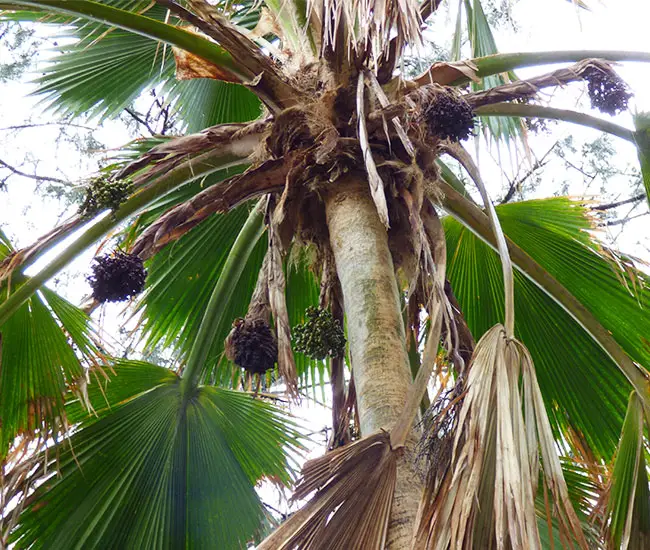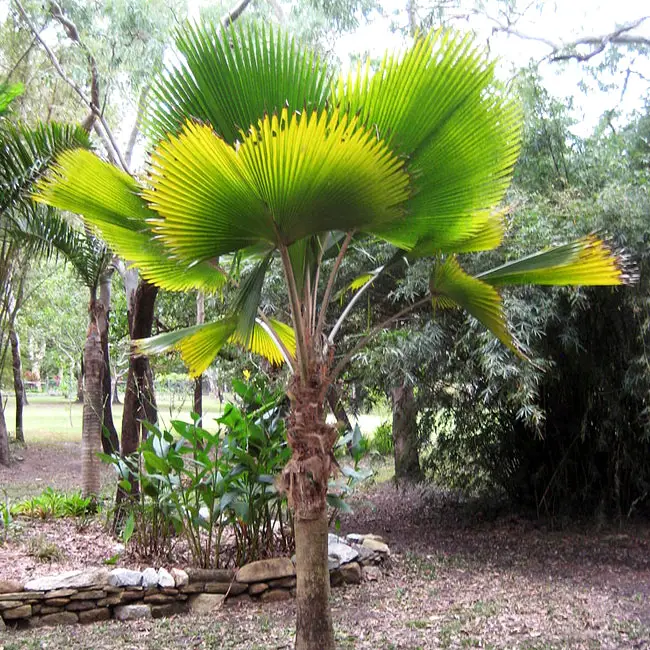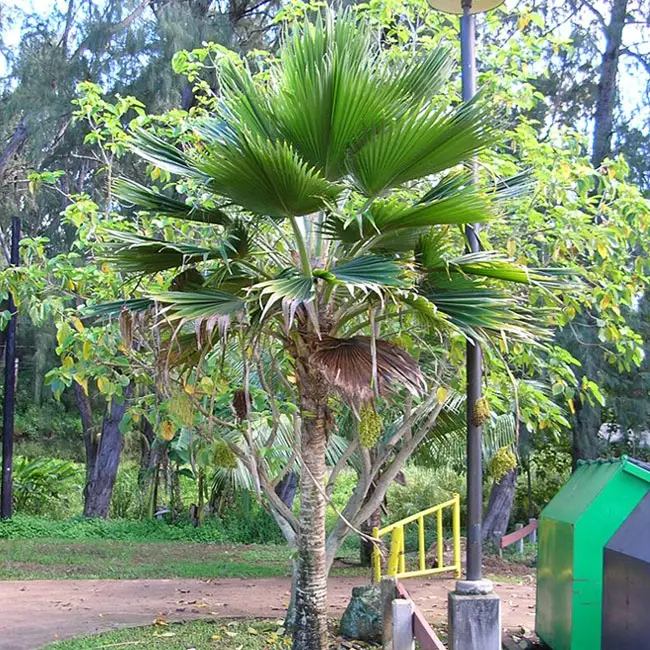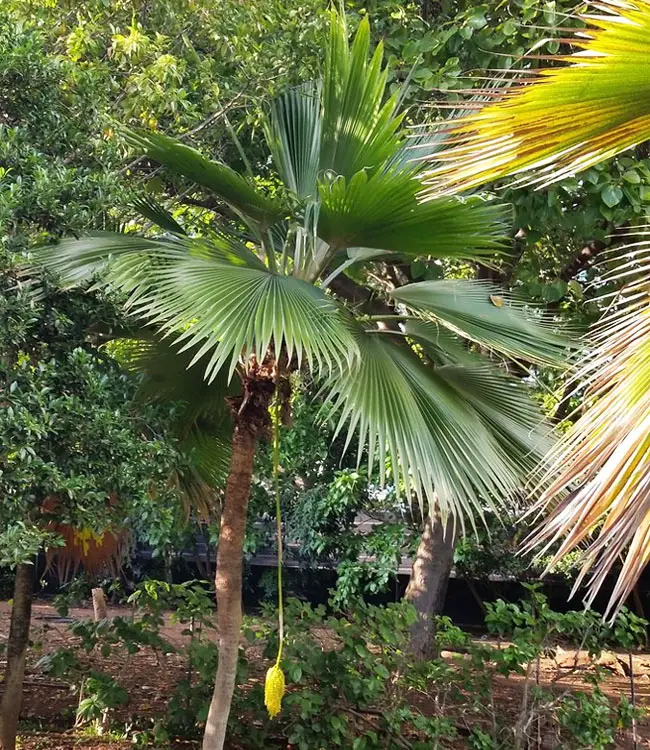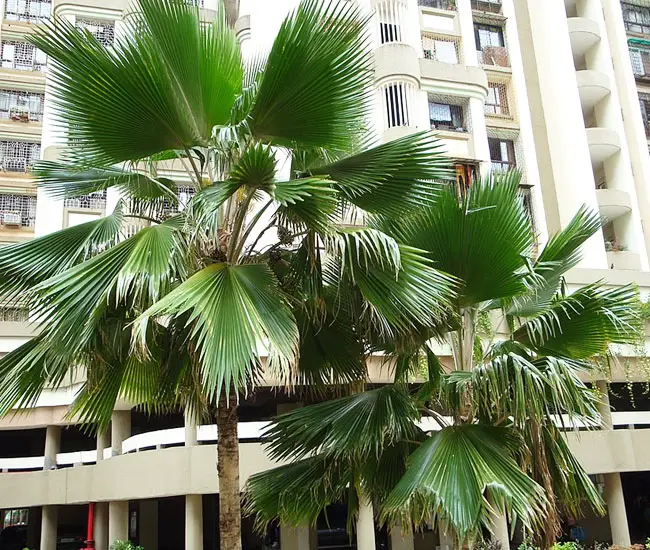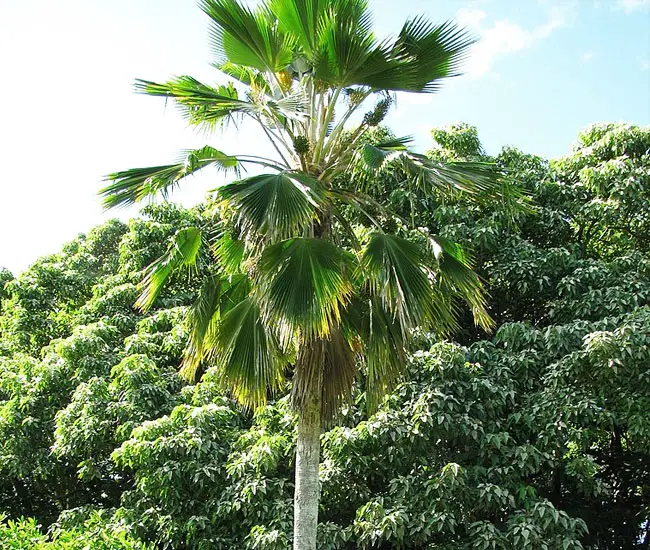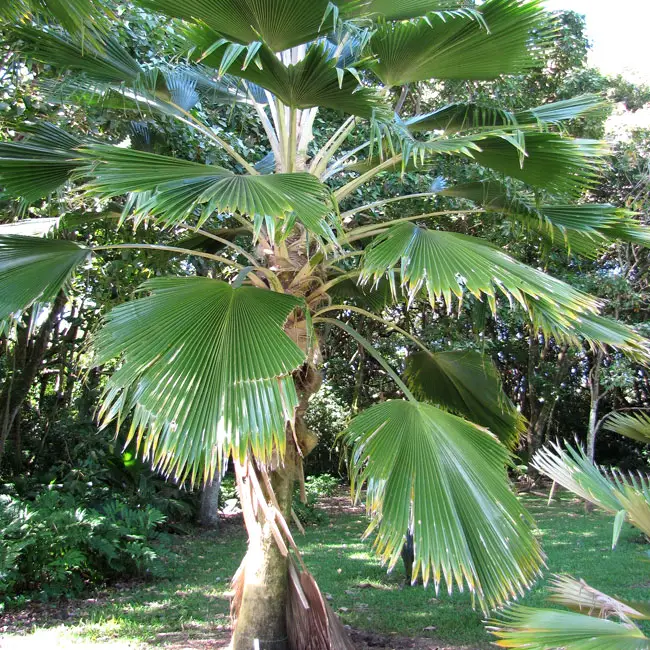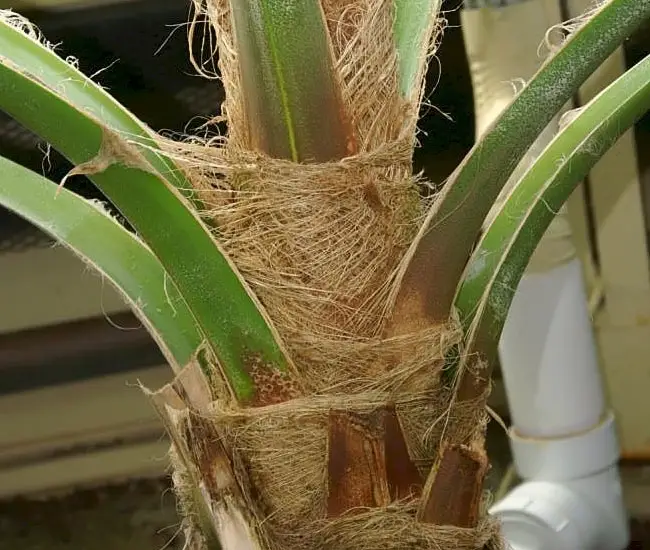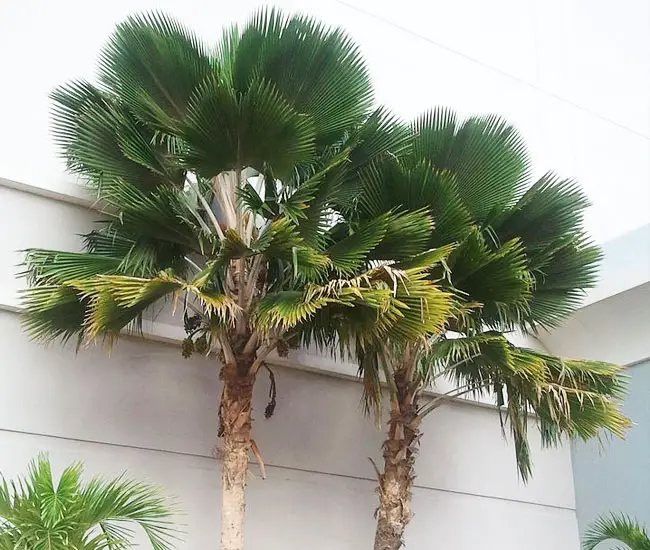
The Fiji Fan Palm Tree (Pritchardia pacifica) is native to the Fiji Islands and is known for its distinctive appearance. This palm species features a slender trunk that can vary in height, supporting a dense crown of large, fan-shaped fronds.
The Fiji Fan Palm’s elegant appearance makes it a striking addition to tropical and subtropical landscapes, and it is highly regarded for its ornamental value.
This species is adaptable to a variety of well-draining soil types, including sandy and loamy soils, making it an excellent choice for coastal planting in tropical regions.
Quick Facts:
| Scientific name: | Pritchardia pacifica |
| Common names: | Fiji Fan Palm, Fiji Palm. |
| Origin: | Native to Fiji in the Southwest Pacific. |
| Growth Rate: | Slow. Up to 25 ft tall and 10 ft wide. |
| Cold Tolerance: | USDA Zone 11 (above 40 F) |
| Light Req: | Partial shade to full sun |
| Water Req: | Moderate |
| Soil Req: | Widely adaptable. |
| Fruit: | Yes. Blue-black. Not Edible. |
| Propagation: | By seed, germinating in 2-3 months. |
Fiji Fan Palm Appearance
Trunk: Typically, the trunk of the Fiji Fan Palm is slender and can reach varying heights, depending on factors such as age and environmental conditions.
It may range from a few feet to over 30 feet (approximately 1 to 9 meters) in height. The trunk is adorned with prominent leaf scars, adding texture to its visual appeal.
Leaves (Fronds): The most defining feature of this palm is its large and fan-shaped fronds. These fronds can measure up to several feet in diameter, often spanning between 3 to 10 feet (approximately 1 to 3 meters).
The fronds’ shape resembles a semicircular fan or a partially open hand, and they are typically dark green with pleated or ridged surfaces, creating depth and texture in their appearance.
Crown: At the top of the palm’s trunk, a dense crown of fan-shaped fronds creates an eye-catching display. As new fronds develop, they gradually unfurl, adding to the palm’s overall elegance.
Fiji Fan Palm Flowers and Fruits
The Fiji Fan Palm produces small, inconspicuous flowers that grow on inflorescences. These inflorescences are typically branched and emerge from the crown of the palm. While the individual flowers may not be showy, they play a crucial role in the palm’s reproduction by attracting pollinators, such as insects.
The palm’s fruits, often called “fan fruits” due to their distinctive shape, are typically round to oval and vary in size based on the palm’s age and environmental conditions.
They measure around 11-12 mm in diameter and contain a single seed, approximately 7 mm in diameter. These fruits undergo a color transformation, shifting from green when immature to shades of brown or black when they ripen. They have a fleshy texture and may contain one or more seeds within.
How To Care For Fiji Fan Palm
Light: Fiji Fan Palms thrive in locations that receive ample sunlight. They prefer full to partial sun exposure, making them well-suited for tropical and subtropical landscapes.
Soil: Well-draining soil is crucial for these palms. They perform best in soil that allows water to pass through easily, preventing waterlogging, which can be detrimental to their roots.
Watering: Fiji Fan Palms require consistent and regular watering to maintain adequate soil moisture levels. However, it’s important not to overwater, as they are sensitive to waterlogged conditions. Allowing the top layer of soil to dry out slightly between watering sessions is advisable.
Temperature: These palms flourish in warm and tropical climates, with temperatures ranging from 65°F to 85°F (18°C to 29°C) being ideal. While they can tolerate brief periods of cooler weather, protecting them from frost is necessary to prevent damage to their fronds and overall well-being.
Pruning: Pruning should be minimal and primarily focused on removing dead or yellowing fronds to maintain the palm’s appearance and health. Excessive pruning can stress the palm and hinder its growth.
Fertilization: Fiji Fan Palms benefit from occasional fertilization during the growing season, typically in spring and summer. A balanced, slow-release palm fertilizer can provide them with essential nutrients for healthy growth.
Pest and Disease Management: While generally hardy, it’s wise to monitor Fiji Fan Palms for potential pest issues, such as scale insects or mealybugs. Timely treatment with appropriate measures, such as insecticidal soap, can address such problems. Ensuring proper drainage in the soil helps prevent root rot, a potential issue when soil retains too much water.
Propagation: Propagating Fiji Fan Palms is typically achieved through seeds, which can be a slow but reliable process. This method allows for expanding your collection of these elegant palms.
Fiji Fan Palm Pictures
